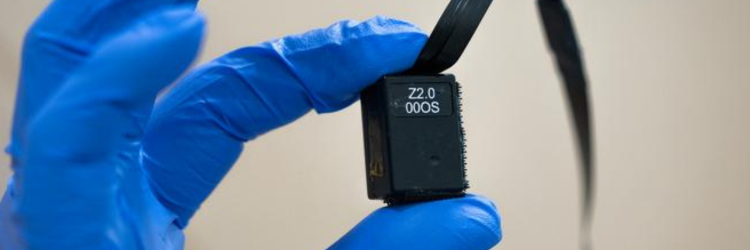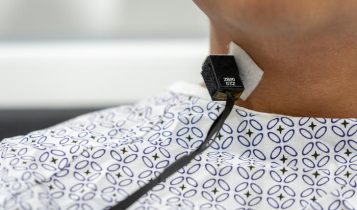
A research team led by UC San Diego has developed a wearable, non-invasive device capable of measuring activity in human cervical nerves in clinical settings. This innovation marks the first time researchers have recorded such neural activity, termed Autonomic Neurography (ANG) non-invasively.
The device detects signals from the vagus and carotid sinus nerves and other autonomic nerves found in the skin and muscles of the neck.
The vagus nerve plays a pivotal role in the body’s response to injury or infection, making it a focus for research into conditions like sepsis and post-traumatic stress disorder (PTSD). Sepsis causes millions of deaths in the U.S. annually, while nearly 3.5% of Americans deal with PTSD.
The new device, featuring a flexible, adhesive-integrated electrode array, aims to provide real-time detection of deep neural activity, offering an early warning for medical professionals when the body is under stress.

CREDIT: Qualcomm Institute/UC San Diego
The device uses “magnetoneurography” to non-invasively detect magnetic fields from nerve activity. Tested on nine adult subjects, the device monitored neural responses to inflammation-inducing toxins, simulating a hyperinflammatory state akin to sepsis. It identified changes in nerve activity within 30 minutes.
The study also found variability in patients’ responses, highlighting the potential for the device to identify those at higher risk of severe immune reactions. This capability could be crucial for tailoring treatments and understanding the role of the nervous system in conditions like sepsis and PTSD. The technology represents a significant advancement in non-invasive monitoring, with broad implications for managing critical health conditions and personalizing patient care.
The study, published in Nature Communications Biology, demonstrated the device’s ability to detect deep neural activity in a simulated clinical setting. “We are encouraged by our results. The device is poised to provide an early diagnostic marker of pathogen infection, or inflammation from a pathological process,” said senior author Imanuel Lerman. The device is currently being tested at the intensive care units of UC San Diego Health to detect early signs of sepsis.
